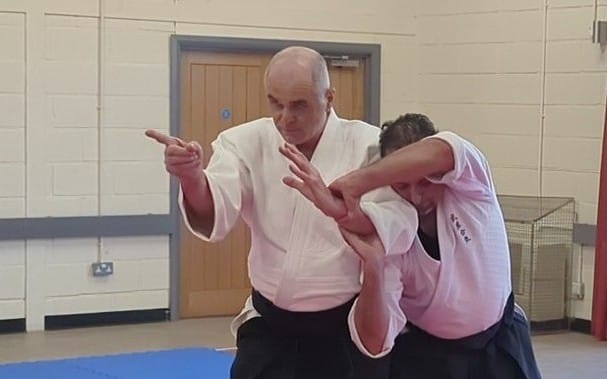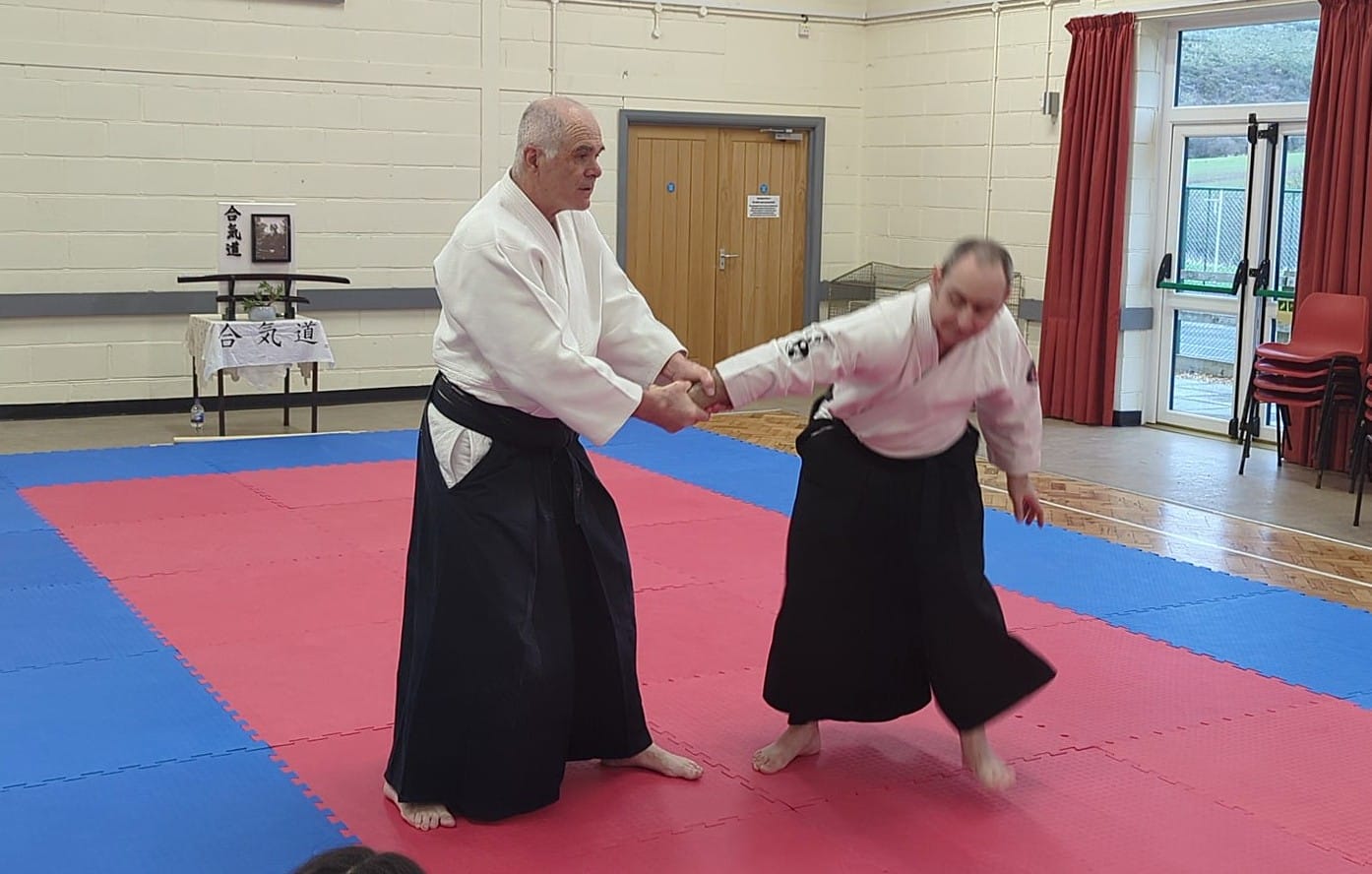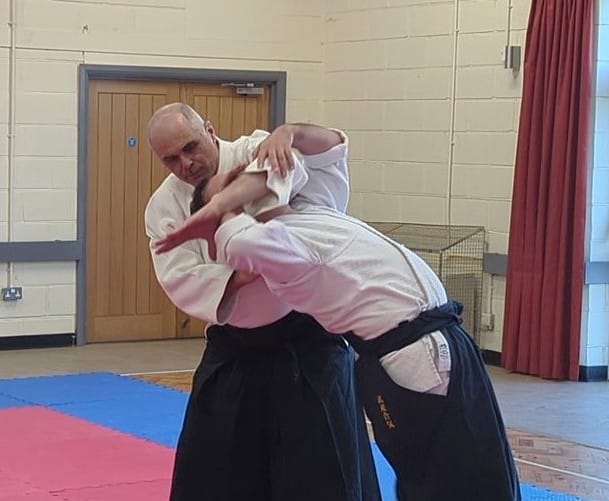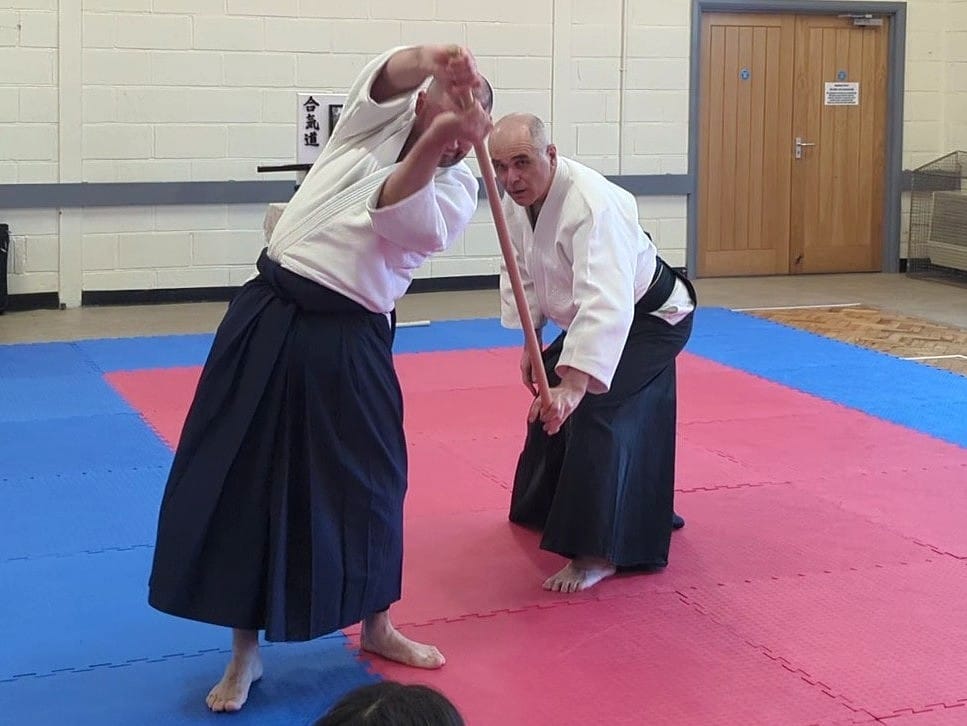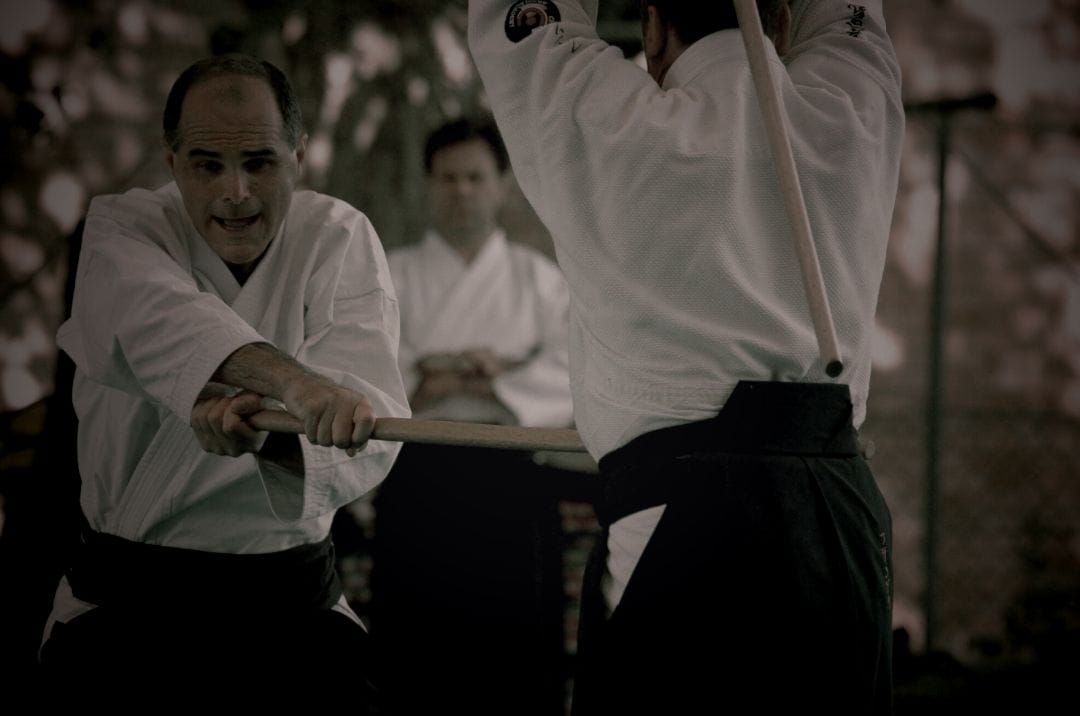The foot movement that enables the action known in Aikido as tai sabaki consists of two stages:
1- The front foot slides forward and the body begins to rotate, turning 180° from its initial position (due to this pivot, the front foot becomes the rear foot). This movement corresponds to the action known as irimi in Aikido. Tori thus reaches the side of uke, and to throw him from there, he must perform another 180° rotation that brings him back to his initial position. This learning phase is a classic part of the teaching method for sokumen irimi nage (kokyu ho) and irimi nage, for example.
2- The rear foot rotates widely around the front foot and ends up behind it (the front foot therefore remains the front foot but in a new direction). This movement corresponds to the action known as tenkan in Aikido.
The video shows the difference between these two actions:
It is important to understand that tai sabaki is only complete when the two actions of irimi and tenkan are accomplished, whether for sokumen irimi nage, irimi nage, kote gaeshi or any other technique.
The reason for this is that the complete irimi-tenkan action is necessary to set uke in motion; the irimi action alone is not enough: tenkan is impossible without irimi, but irimi is powerless without tenkan. However, in order for the principle of action of Aikido to be respected, uke must be set in motion at the periphery of the immobile centre occupied by tori. Only in this way can the throw be executed without the use of force and in complete safety.
There is therefore a tenkan effect on uke, which moves him, and which is fundamental to the Aikido throw.
Aikido, which is a progressive teaching method, nevertheless trains uke to throw from phase 1, which means throwing an opponent who has not yet been set in motion. In so doing, tori is not the immobile centre of a dynamic of mobilisation of uke; on the contrary, it is tori who moves to throw an immobile uke. But this is only one phase of the apprenticeship, a necessary phase in which the technique still lacks its true dimension. The aiki technique requires uke to move in order to be thrown. One day, therefore, we must go beyond the level of purely pedagogical practice to reach the Aikido of O Sensei.

